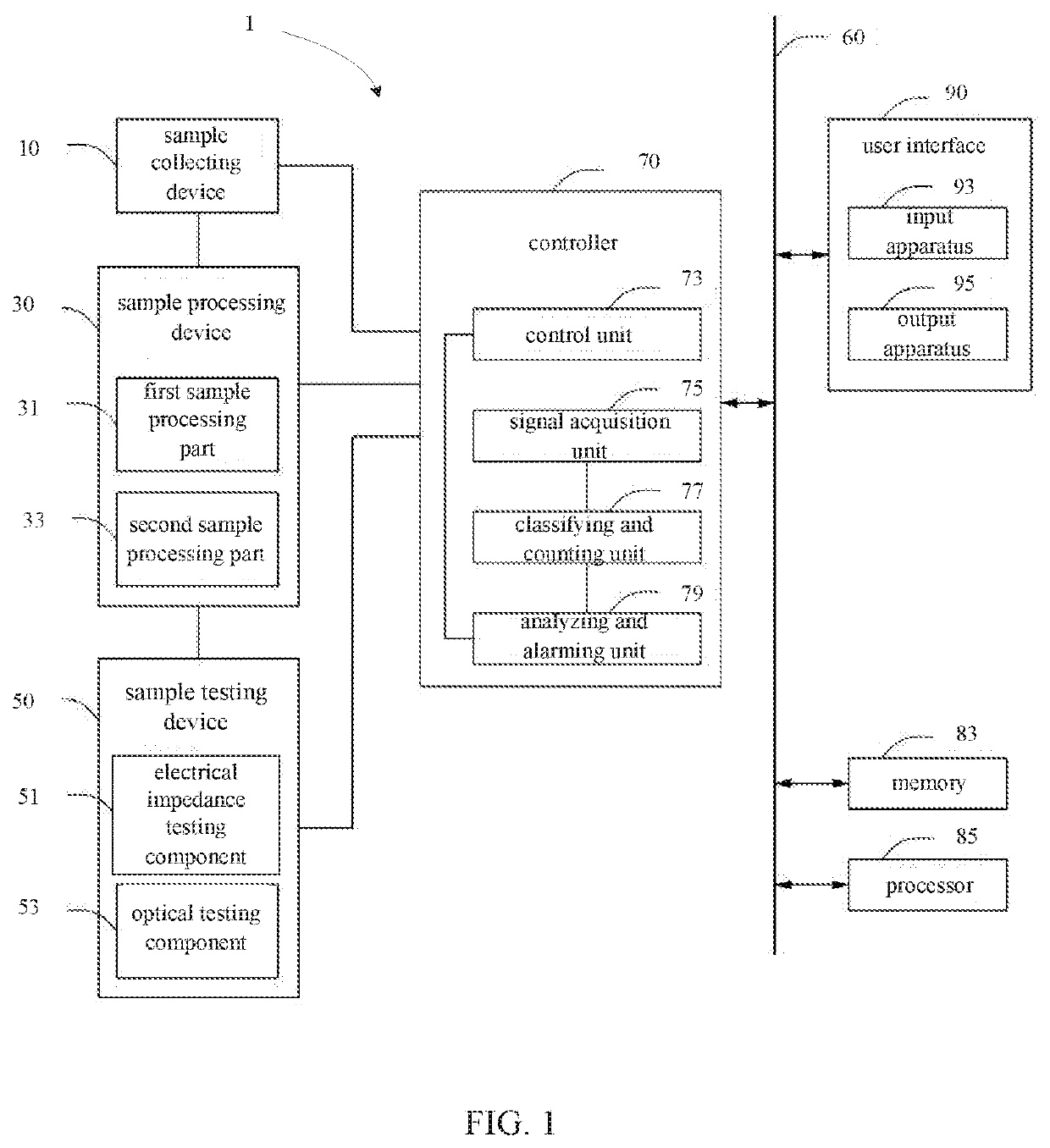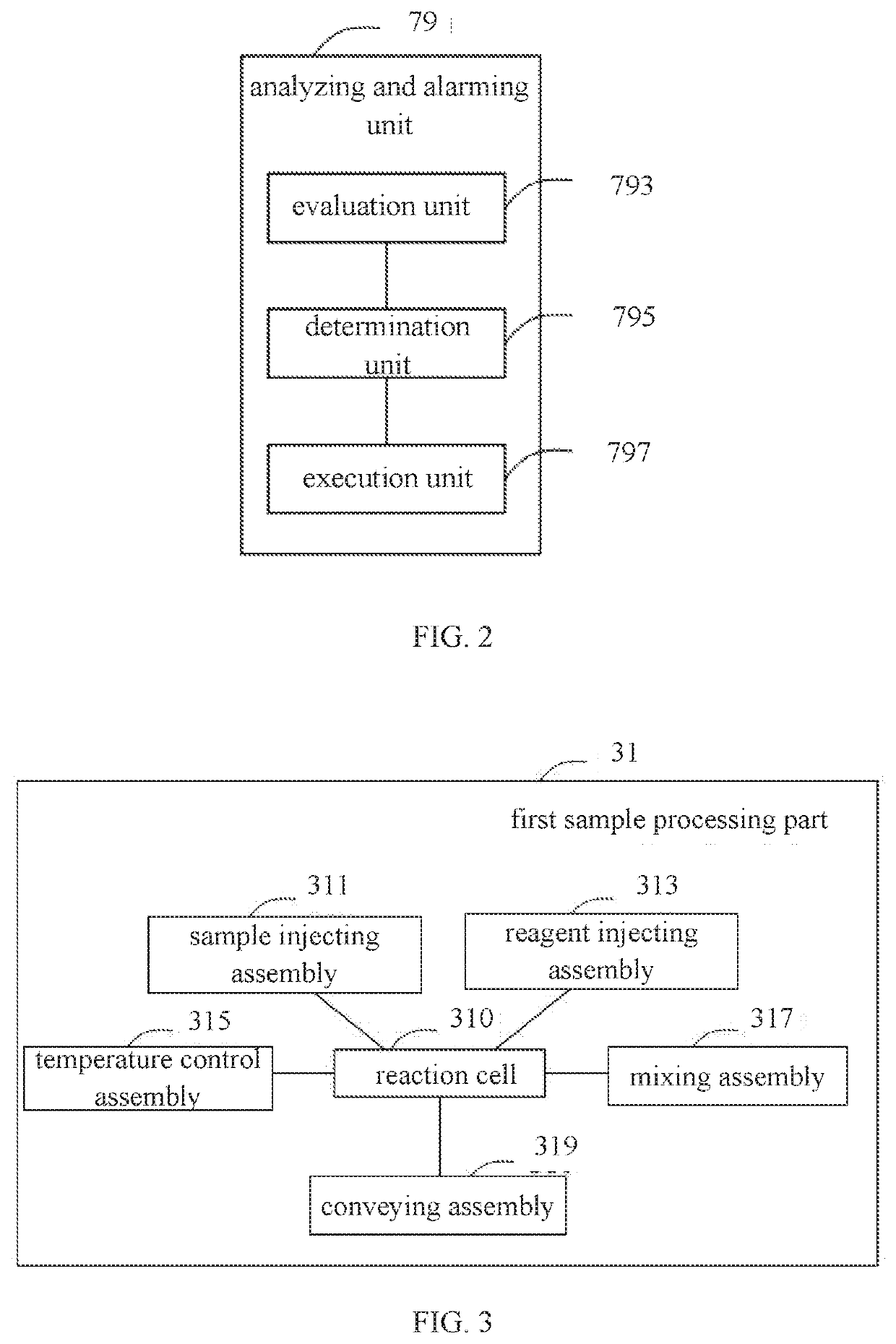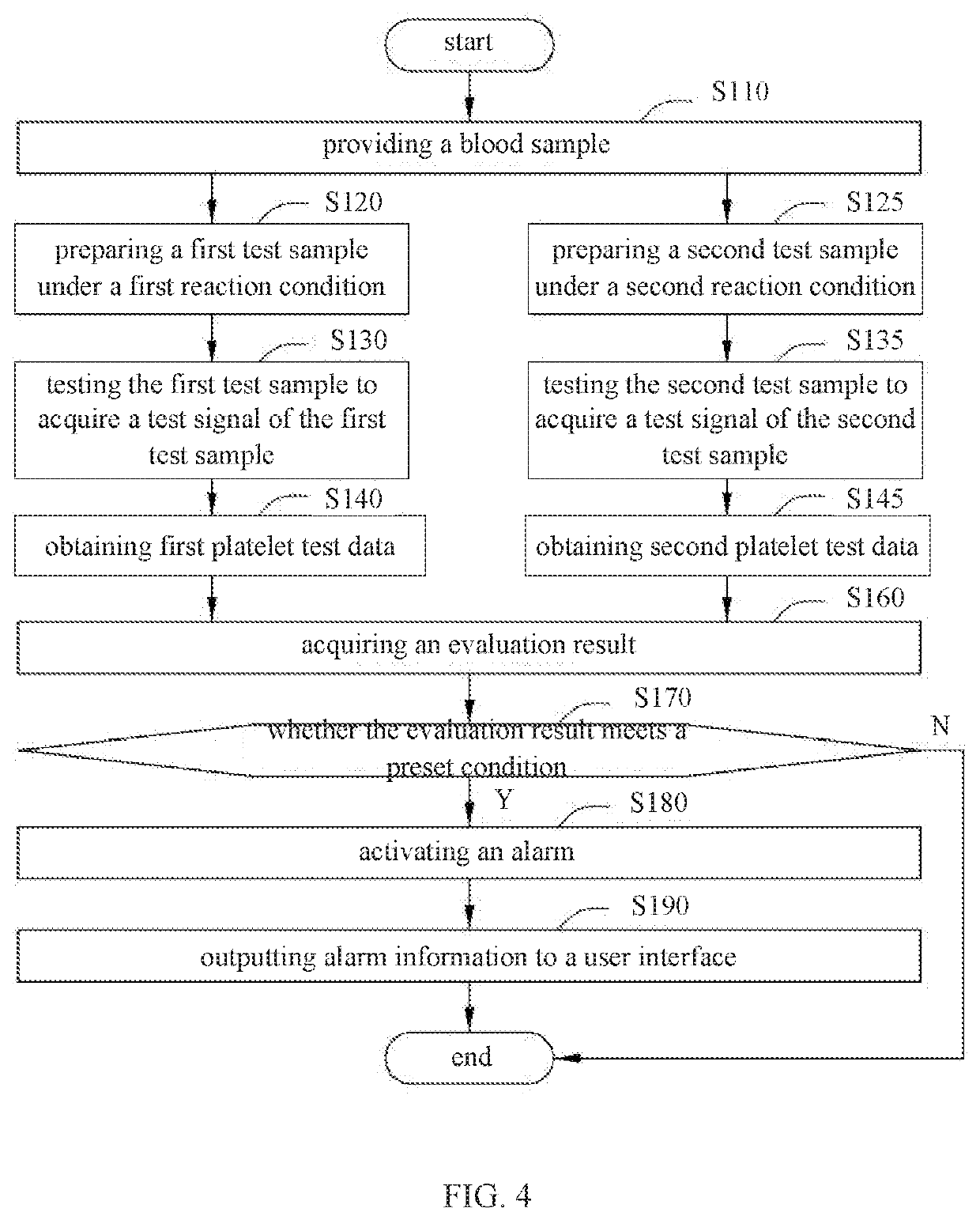Alarming method for platelet aggregation sample, blood cell analyzer and storage medium
a blood cell analyzer and platelet aggregation technology, applied in the field of blood cell analysis, can solve the problems of clinical misdiagnosis and even wrong treatment, difficult to be distinguished by the blood cell analyzer, and difficult for the existing blood cell analyzer to identify platelet aggregation, so as to reduce the degree of platelet aggregation of the blood sample, improve the accuracy of blood sample detection, and improve the effect of blood sample aggregation degr
- Summary
- Abstract
- Description
- Claims
- Application Information
AI Technical Summary
Benefits of technology
Problems solved by technology
Method used
Image
Examples
example i
[0159]Blood sample A was tested using a method disclosed in an example of the second embodiment of the present application (FIG. 5). Specifically, in step S220, the first reaction condition was controlled to include a temperature of 25 degrees Celsius and bubble mixing, and in step S225, the second reaction condition was controlled to include a temperature of 42 degrees Celsius and agitator arm mixing (600 rpm). The histogram of the first test sample as shown in FIG. 8A is obtained in step S2401, and the first platelet count PLT1 obtained in step S2403 is 229*109 / L. Accordingly, in step S2451, the forward scattered light-fluorescence scatterdiagram of the second test sample as shown in FIG. 8B was obtained, and the second platelet count PLT2 obtained in step S2453 was 231*109 / L. In this example, the preset condition used is that 10−9*(PLT2−PLT1) is greater than the preset threshold value of 30. For blood sample A, the evaluation value obtained by calculating 10−9*(PLT2−PLT1) is 2, w...
example ii
[0161]Blood sample B was tested using a method disclosed in an example of the second embodiment of the present application (FIG. 5). Specifically, in step S220, the first reaction condition was controlled to include a temperature of 25 degrees Celsius and bubble mixing, and in step S225, the second reaction condition was controlled to include a temperature of 42 degrees Celsius and agitator arm mixing (600 rpm). The histogram of the first test sample as shown in FIG. 9A was obtained in step S2401, and the first platelet count PLT1 obtained in step S2403 was 197*109 / L. Accordingly, in step S2451, the forward scattered light-fluorescence scatterdiagram of the second test sample as shown in FIG. 9B was obtained, and the second platelet count PLT2 obtained in step S2453 was 436*109 / L. In this example, the preset condition used is that 10−9*(PLT2−PLT1) is greater than the preset threshold value of 30. For blood sample B, the evaluation value obtained by calculating 10−9*(PLT2−PLT1) is 23...
example iii
[0163]Blood sample C was tested using a method disclosed in the fourth embodiment of the present application (FIG. 7). Specifically, in step S520, a first test sample was prepared under the first reaction condition which was controlled to include a temperature of 25 degrees Celsius, adding diluent and bubble mixing. The electrical impedance signals of the first test sample were detected in step S530, and the histogram of the first test sample as shown in FIG. 10A was obtained based on the obtained electrical impedance signals in step S540, so that the first platelet test data PLT1 obtained was 7*109 / L. In Step S550, it was determined that the value of PLT1 was abnormal, and step S552 was executed to perform spheroidization and fluorescence staining on the blood sample under the second reaction condition controlled to include a temperature of 42 degrees Celsius and agitator arm mixing (600 rpm). In step S530, forward scattered light and fluorescence signals of the second test sample ...
PUM
| Property | Measurement | Unit |
|---|---|---|
| reaction temperature | aaaaa | aaaaa |
| reaction temperature | aaaaa | aaaaa |
| temperature | aaaaa | aaaaa |
Abstract
Description
Claims
Application Information
 Login to View More
Login to View More - R&D
- Intellectual Property
- Life Sciences
- Materials
- Tech Scout
- Unparalleled Data Quality
- Higher Quality Content
- 60% Fewer Hallucinations
Browse by: Latest US Patents, China's latest patents, Technical Efficacy Thesaurus, Application Domain, Technology Topic, Popular Technical Reports.
© 2025 PatSnap. All rights reserved.Legal|Privacy policy|Modern Slavery Act Transparency Statement|Sitemap|About US| Contact US: help@patsnap.com



